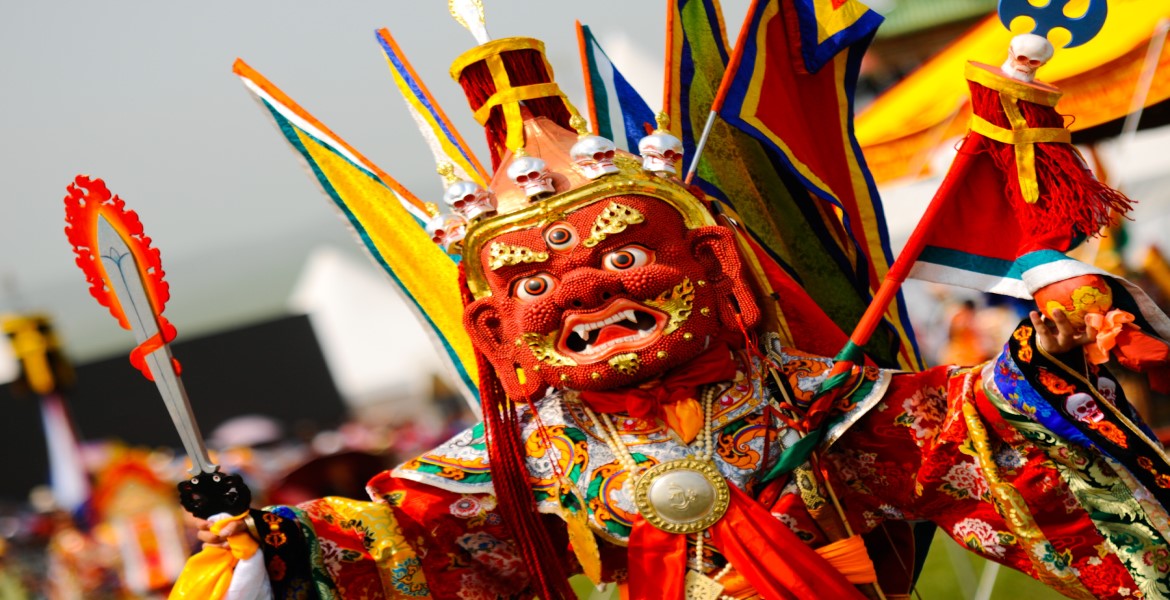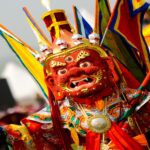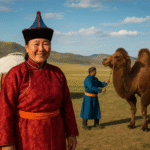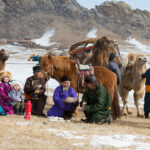Now Reading: Discover the Wonders of the Mongolian Naadam Festival: A Celebration of Tradition and Culture
-
01
Discover the Wonders of the Mongolian Naadam Festival: A Celebration of Tradition and Culture
Discover the Wonders of the Mongolian Naadam Festival: A Celebration of Tradition and Culture

Discover the Wonders of the Mongolian Naadam Festival: A Celebration of Tradition and Culture
Mongolia, a land of sweeping steppes, nomadic heritage, and vast deserts, is home to one of the world’s most unique and vibrant festivals – the Naadam Festival. Celebrated annually, Naadam is more than a festival; it is a living embodiment of Mongolia’s history, culture, and national pride. The festival captivates locals and travelers alike, offering an extraordinary blend of sports, music, dance, and traditional rituals that cannot be experienced anywhere else in the world.
Whether you are a cultural enthusiast, a history lover, or simply looking for an unforgettable adventure, the Naadam Festival provides a truly immersive insight into Mongolian life.
The Historical Roots of Naadam
The origins of Naadam trace back hundreds of years and are deeply intertwined with Mongolia’s nomadic and warrior traditions. Traditionally known as “Eriin Gurvan Naadam”, which means “The Three Manly Games”, the festival was a way for Mongolian warriors to demonstrate and refine their skills in three key disciplines: wrestling, horse racing, and archery.
Historical records suggest that Naadam began during the era of the Mongol Empire, serving both military and social purposes. Beyond training warriors, the festival was a time for communities to gather, exchange news, and strengthen social bonds. Over centuries, Naadam evolved from a local warrior competition to a nationwide cultural celebration, embracing people from every corner of Mongolia.
In modern times, Naadam has become an official national holiday, celebrated every July 11–13. The festival not only honors Mongolia’s history but also celebrates the resilience, skill, and unity of the Mongolian people.
The Three Manly Games
Naadam is primarily known for the “Three Manly Games”, which are the highlight of the festival and draw the largest crowds. Each game has unique traditions and rituals, reflecting Mongolia’s nomadic heritage and respect for skill and endurance.
1. Mongolian Wrestling (Bökh)
Mongolian wrestling, or Bökh, is the most prestigious event of Naadam. Unlike international wrestling, Bökh has no weight classes, allowing wrestlers of all sizes to compete. Matches are judged purely on technique, strength, and strategy.
Wrestlers wear traditional attire: the zodog, a tight open-chest jacket, and shuudag, short trunks. Each wrestler performs ceremonial movements before a match, showcasing respect for the sport and its long history. Victory in wrestling carries immense prestige, and champions are celebrated as local heroes.
2. Horse Racing
Horse racing is a cornerstone of Naadam and reflects Mongolia’s deep equestrian culture. Unlike typical short-distance races, Mongolian races often cover long distances, sometimes exceeding 30 kilometers. Young riders, usually children aged 7–13, demonstrate remarkable skill and courage, guiding their horses across the vast steppe.
These races are not just sporting events; they honor the centuries-old bond between Mongolians and their horses. Winning horses and jockeys receive accolades, and races are accompanied by singing, blessings, and traditional celebrations.
3. Archery
Archery competitions are a spectacle of precision and tradition. Both men and women participate, using traditional Mongolian bows to hit distant targets. Archers wear colorful deel (traditional robes), and ceremonial rituals precede each round. Archery at Naadam symbolizes discipline, focus, and respect for Mongolian heritage.
Regional Naadam Celebrations
While the National Naadam Festival in Ulaanbaatar is the largest, many provinces and rural communities hold their own local Naadam celebrations. These regional events offer a more intimate glimpse into Mongolian life and customs.
Ulaanbaatar Naadam
The capital city hosts the National Naadam Festival, attracting thousands of spectators from around Mongolia and abroad. Events are held at the Central Stadium, where wrestling, horse racing, and archery competitions are accompanied by parades, cultural performances, and traditional food markets.
Gobi Desert Naadam
In southern Mongolia, the Gobi Desert hosts a smaller, unique version of Naadam. The festival is celebrated in vast desert landscapes, with camel races added alongside horse racing. Visitors enjoy not only sports but also campfire gatherings, nomadic storytelling, and stargazing under the clear desert sky.
Khuvsgul and Northern Mongolia
Northern regions, including Khuvsgul, host Naadam with a focus on local traditions, including reindeer herding competitions, folk music, and handicraft fairs. These events provide an authentic experience of nomadic lifestyles and are often less crowded than the capital festival.
Cultural Performances and Traditions
Naadam is not just about sports; it is a celebration of Mongolian culture in every sense. Traditional music, dance, and attire are on full display. The morin khuur, a horsehead fiddle, produces haunting melodies, while throat singing performances captivate audiences with their unique harmonics.
Parades feature performers in colorful deel robes, traditional hats, and ornamental boots, creating a vibrant visual spectacle. Storytelling and folk dances are also common, passing down the oral traditions of Mongolian history.
Culinary Delights at Naadam
Food plays an essential role in Naadam festivities. Festival-goers can sample traditional Mongolian dishes, such as:
- Buuz: Steamed meat dumplings, often filled with beef or mutton.
- Khuushuur: Fried meat pastries that are crispy on the outside and juicy inside.
- Airag: Fermented mare’s milk, a traditional Mongolian beverage.
- Boodog: Meat cooked inside a heated animal skin, a traditional method for special occasions.
These culinary experiences provide a taste of Mongolia’s nomadic heritage and hospitality.
Historical Timeline and Evolution
- 13th Century: Naadam emerges as a warrior tradition during the Mongol Empire.
- 17th–18th Century: The festival spreads across provinces, incorporating local customs and rituals.
- 1921: Naadam becomes a national celebration following Mongolia’s independence.
- 1990s: Post-communist Mongolia revives traditional Naadam elements, emphasizing cultural heritage.
- Today: Naadam is a modern national holiday celebrated with both traditional and contemporary events.
Travel Itineraries for Naadam Visitors
1-Day Ulaanbaatar Tour
- Morning: Attend the opening ceremony at Central Stadium.
- Midday: Watch wrestling matches and archery competitions.
- Afternoon: Explore traditional food stalls and cultural exhibitions.
- Evening: Attend folk music performances and parade.
3-Day Mongolia Naadam Adventure
- Day 1: National Naadam Festival in Ulaanbaatar.
- Day 2: Travel to Terelj National Park for rural horse racing and local Naadam events.
- Day 3: Visit Gobi Desert region for camel races, stargazing, and nomadic lifestyle experiences.
Local Stories and Legends
Naadam is full of legendary tales passed down through generations. One story tells of Baatar, a famous wrestler, whose unmatched skill and humility made him a symbol of courage and honor. Another legend celebrates the bond between a young horse rider and their horse, emphasizing loyalty, trust, and endurance – values deeply rooted in Mongolian culture.
Tips for Tourists
- Plan Early: Accommodation fills up fast in July; book in advance.
- Dress for the Weather: Summer days are warm, but evenings can be chilly on the steppe.
- Respect Traditions: Follow local customs, especially during ceremonial events.
- Try Local Foods: Participate in the culinary experience of traditional Mongolian dishes.
- Travel Smart: Rural festival locations may require off-road transportation or guided tours.
Conclusion
The Mongolian Naadam Festival is an extraordinary cultural experience that brings together history, sports, music, and community spirit. From the adrenaline of long-distance horse races to the precision of archery and the strength of wrestling, Naadam celebrates the very essence of Mongolia.
Whether you visit the bustling streets of Ulaanbaatar, the vast Gobi Desert, or the northern provinces, Naadam offers a journey into a living tradition that has endured for centuries. It is not merely a festival; it is a vibrant celebration of national identity, unity, and heritage.
Attending Naadam is an adventure that promises unforgettable memories, authentic cultural experiences, and a deep connection to the Mongolian way of life. For travelers seeking something unique, immersive, and historically rich, Naadam is a must-experience event.






